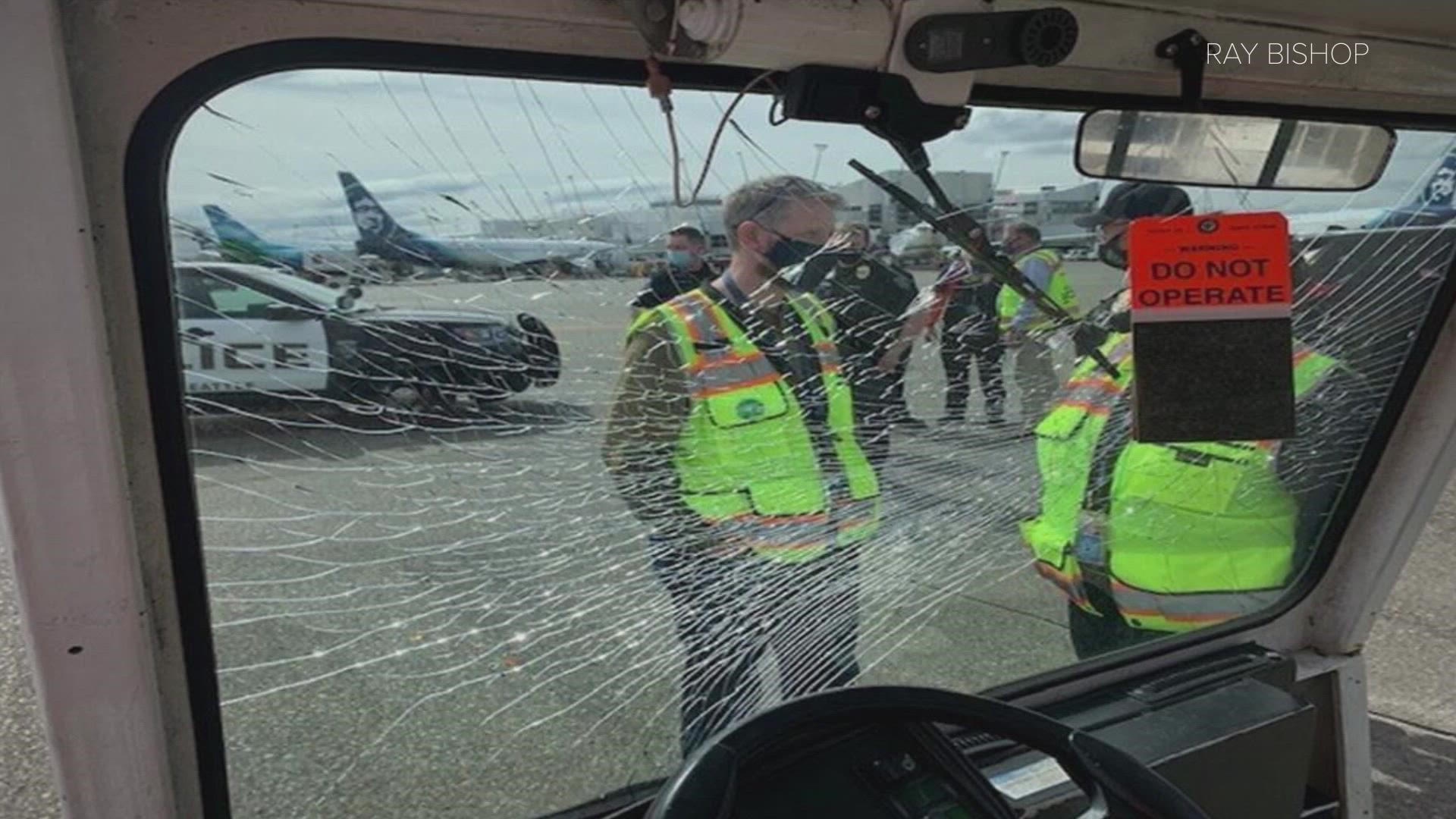SEATAC, Wash. — As Seattle-Tacoma International Airport grew for much of the past decade, so did the number of injuries, particularly to workers who perform jobs in and around airplanes on the ground.
In 2019, following a tough 2018, the Port of Seattle Commission was briefed about efforts to get a growing number of accidents and incidents on the ramp under control.
By then, Sea-Tac was the eighth busiest airport in the country - as measured by takeoffs and landings. That represented a 45% increase in passengers over five years, according to airport management.
In 2018, Sea-Tac documented 311 incidents. Of those, 84 of them were considered major, including an employee pinned between baggage carts, another who fell off a lift truck, along with major damage, including damage to aircraft.
A major incident is considered anything that involves hospitalization, loss of life, limb, and eyesight. It also covers property damage above $30,000 and “damage to aircraft affecting flight or reportable to the FAA or a runway incursion.” An Intermediate injury would be one requiring transport, by ambulance to a hospital, for example, and damage between $1,000 and $30,000 and inadvertent contact with an aircraft that takes it out of service. Minor incidents would be an injury treated on sight, property damage of less than $1,000, or contact with an aircraft that only caused a delay.
In 2021, the airport recorded 321 incidents, but fewer were major. Overall, major incidents were reduced to just eight, seven of those involved damage to planes, one was to a person.
“I was a very big outdoors person. I used to play soccer in high school. I liked to go on runs to clear my mind,” said Alyah Payne, who lost her left foot and part of her left leg after a collision on April 2, 2021, when the electric baggage tug she was driving collided with another going the opposite direction.
She described the location of that crash as a blind curve arcing around construction work at the North Satellite terminal. The concrete jersey barrier was topped by a chain-link fence, with blue tarps were attached to the fence. She said as she tried to avoid the collision, her foot was thrown out of the doorless cab and was crushed between the two vehicles.
“I just turned 21, and a big part of my life was going to be young … hang out with my friends, and travel and do the things that an able-bodied 21-year-old should be able to do,” Payne said, adding that she hopes to get back to that while still coping with an amputation which came after she said doctors struggled for a month to save her foot.
“Our lawsuit is principally against the Port of Seattle,” said attorney Ray Bishop.
Bishop is representing Payne in a lawsuit against the port, two airlines, and a construction company.
In another tug accident more than a decade ago, he represented a worker who was paralyzed and suffered serious nerve damage to an arm. Bishop argued that the port is ultimately responsible and cannot shift or delegate responsibility to its tenants. That case initially won a $40 million judgment and went before the state Supreme Court twice. Bishop said in a close decision he was unable to convince the state’s high court to abandon shared liability, with the port being liable for $10 million.
In Payne’s case, he vows to try again.
“The port becomes responsible, it has a non-delegable duty … they can’t delegate responsibility to operate safely to any other entity,” Bishop said.
For its part in the wake of the 2018 spike, the Port of Seattle stated it has:
- “Hired a full-time employee dedicated to safety assurance and ground service equipment condition.
- "Established airfield interventions, or safety observations, with safety observers watching company practices and promoting safe operational habits while pointing out corrections to avoid potential incidents.
- "Performed post-incident debriefs for all major and intermediate incidents to improve root cause analysis.
- "And is holding companies more accountable for latent systemic/organizational weaknesses that enable unsafe practices/performance.”
Port spokesperson Perry Cooper provided a chart showing the number of reported incidents increasing because the port is asking that all cases be reported, but that the rate of major and intermediate incidents which stood at 19.2 per 100,000 operations - take off and landings in 2018 - has dropped to 16.89 in 2021.

